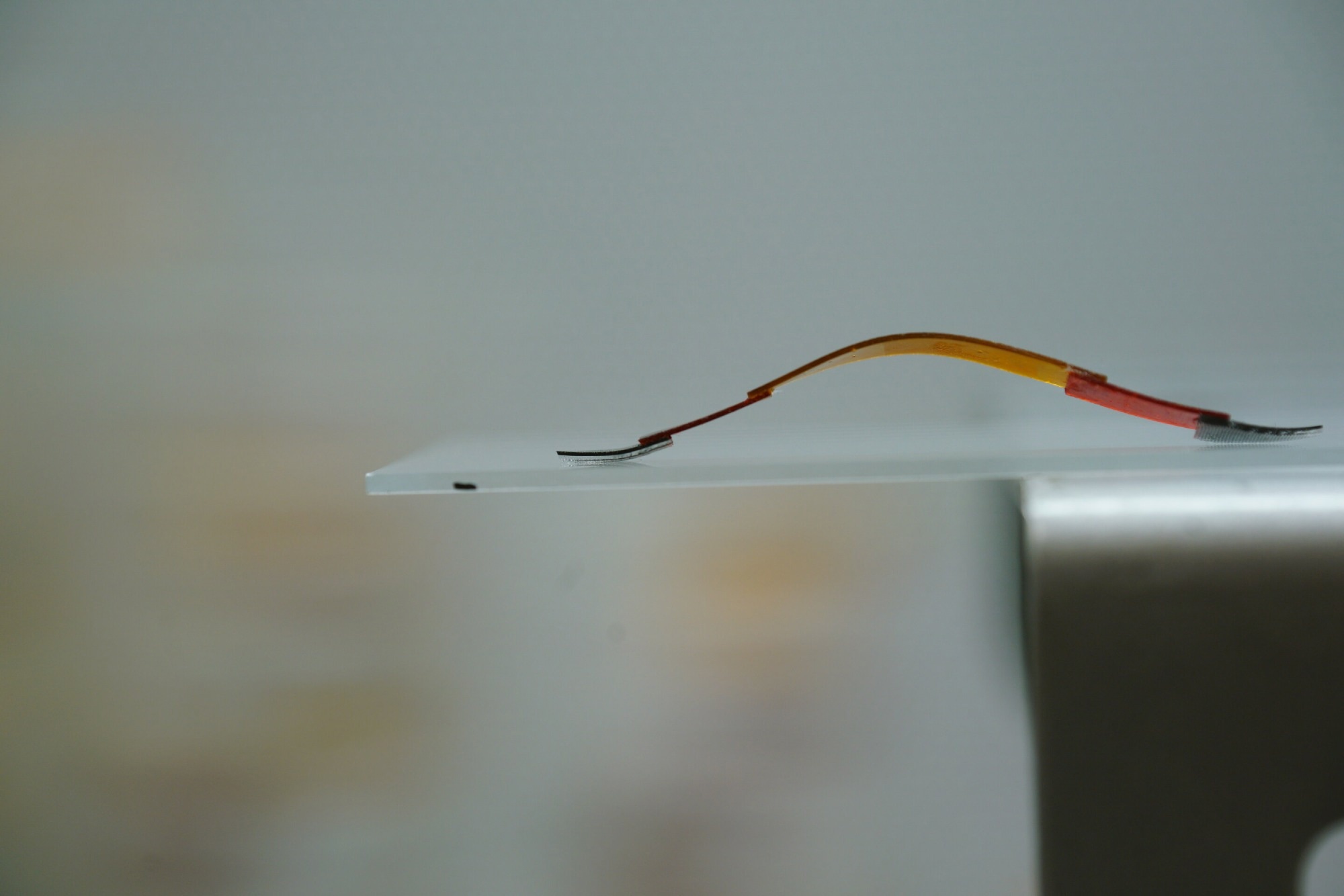The climbing skills of different organisms like geckos, inchworms, and tree frogs offer a potential platform for the design of soft climbing robots.

Tiny new robot, dubbed the GeiwBot. Credit: University of Waterloo
Published in the journal Cell Reports Physical Science, a study inspired by the adhesion qualities of geckos and the movement of inchworms presented a hybrid bioinspired design as a soft robot that could climb on ceilings and walls of various textures like glass, aluminum, and polyimide.
Biomimetics – Taking Inspiration from Nature
Scientists have found that the climbing ability of specific living creatures, including geckos, inchworms, and Parthenocissus tricuspidate, is closely linked to their biological tissue microstructure.
This unique ability is essential to their survival, allowing them to prey on targets, protect from harm, and aid reproduction and growth.
By studying these creatures and emulating their tissue structures and locomotion behaviors, researchers can develop soft robots which can carry out tasks including searching, sensing, and surgery.
This field of biomimetics holds promise for developing innovative solutions in various areas, including healthcare and exploration.
Bioinspired Soft Robots
The gecko is well known for its remarkable climbing ability, which can be attributed to the dynamic attaching and detaching mechanism of its toes.
The toes of the gecko possess a distinct hierarchical and planar microstructure made up of hair and follicle cells, which enables significant van der Waals forces, allowing quick adhesion on different surfaces.
Although several gecko-inspired microfibrillar arrangements have been used in rigid-body robot footpads for climbing, such bioinspired systems need mechanical transmission and complicated operating modes. Therefore, they lack the suppleness, deformability, and adaptability exhibited by the soft bodies of living things.
Soft climbing robots need a dynamically attachable and detachable footpad and a flexible soft body to function effectively. It is also preferable that the flexible soft body and sticky footpad are integrated.
The Role of Liquid Crystal Networks
Researchers are exploring liquid crystal networks (LCNs) for their programmable design, lightweight miniaturization, tunable elasticity, and stimuli responsiveness, which make them an ideal material for modeling the controllable soft tissue of gecko toes.
The LCNs have shown promising results for effective extending-adhering/scrolling-releasing actions. Researchers have utilized exterior non-contact stimuli like heat and light to achieve gecko-like attachment and detachment of untethered soft actuators.
Gecko-Like Soft Robot
The method proposed in the study involved coupling the gecko adhesive pad (GAP) for surface attachment and the photoresponsive LCN leg for soft actuation. By combining the properties of these materials and exploring their synergistic interactions, the researchers were able to create a single holistic soft robot.
To control the robot's movements, the team achieved preloading using a transient magnetic field followed by a photo-driven deformation.
As a result, the robot could dynamically attach and detach the GAP and periodically deform the LCN leg, allowing it to climb different surfaces.
This study provides valuable insights into the material design strategy required to create a soft climbing robot that would not need a tether or external linkages.
By harnessing the synergistic properties of the GAP and LCN, the researchers have demonstrated the potential for future advances in soft robotics for advanced applications such as sensing, searching, and surgery.
In conclusion, the development of GeiwBot, an untethered soft climbing robot, represents a significant advancement in the field of soft robotics.
The integration of the gecko adhesive pad (GAP) and photoresponsive LCN leg enabled precise remote control for movement on different platforms with inclines.
The key feature of this biomimetic hybridized arrangement was its ability to achieve magnetic-aided adhesion along with light-driven detachment motion for uninterrupted climbing movement.
The study's results provide fresh insights into applying biological concepts to innovative robotic design. GeiwBot demonstrates the potential of soft robotics for advanced applications such as sensing, searching, and surgery.
One of the authors of the research, Professor Boxin Zhao, commented on the importance of their work, “Even though there are still limitations to overcome, this development represents a significant milestone for utilizing biomimicry and smart materials for soft robots.”
Reference
Sun, J., Bauman, L., Yu, L., & Zhao, B. (2023). Gecko-and-inchworm-inspired untethered soft robot for climbing on walls and ceilings. Cell Reports Physical Science, 4(2). Available at: https://doi.org/10.1016/j.xcrp.2022.101241
Disclaimer: The views expressed here are those of the author expressed in their private capacity and do not necessarily represent the views of AZoM.com Limited T/A AZoNetwork the owner and operator of this website. This disclaimer forms part of the Terms and conditions of use of this website.